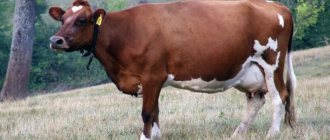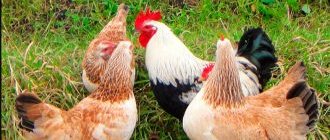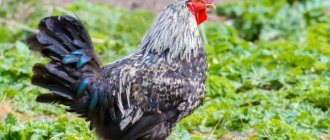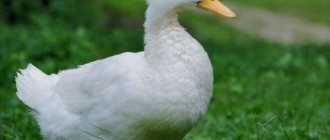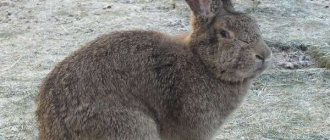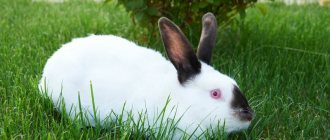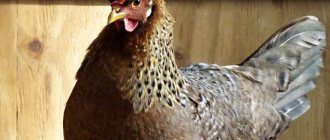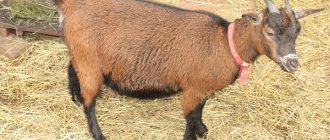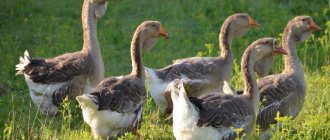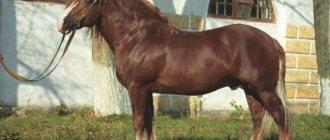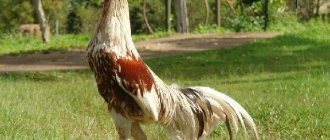The Trakehner horse breed appeared a very long time ago. Due to the fact that its breeding selection was carefully carried out by breeders, the animals have many advantages and few disadvantages. Traken breeding is a profitable business if you approach it responsibly and seriously. The article discusses the rules of nutrition for horses and the features of caring for them.
History of the breed
Trakehner horses appeared in 1232 in a village in Prussia. The Knights of the Order wanted to have a new hardy breed in their troops, which would make it easier for the warriors in the offensive. From the crusades they brought Eastern stallions, which were later crossed with Zhmud mares.
In 1732, a stud farm was created. At the same time, this year was officially recognized as the appearance of the Traken genus. To get started, breeders used more than 1,000 horses of various breeds, including Danish, English and Oriental. Forest mares were crossed with Lithuanian, Polish, Tatar, and Oriental stallions. Animals were bred for several purposes: to produce draft animals that would help in agriculture and carry carriages, as well as riding horses for the army.
Description of the breed
The breed was named after Trakehnen, the stud farm where it was first bred. She is the only one that has not been mixed with any other breed. Previously, the horse could often be found in the cavalry. At the moment, its main use is considered to be equestrian sport. Those for whom grace in movement is important will definitely appreciate the Traken's gait. The jumping ability and beauty of the horses evokes something aristocratic.
Courage, endurance, success in training - all this can be said about the Trakehner breed. For the most part, the colors of Trakens are red, gray, bay, and black. In more rare cases, you can find karak and roan.
The breed is distinguished by its fairly high growth - up to 168 centimeters, strict lines and exquisite dryness. The shape of the horse's head is even, the forehead is wide, and the eyes are expressive. In most cases the profile is slightly concave, but it can also be straight. The horse's neck is graceful, long, slightly reminiscent of a cone, merging into the withers, which are distinguished by their muscularity. The croup is oval. The legs are distinguished by their beauty and strength, large hooves are covered with hard horn. It is difficult to find words that would be exactly suitable to describe the entire attractiveness of the Traken.
The first selective breeding of the Trakehner breed occurred in 1732. Since that time, it has been customary to brand a true purebred animal. On his left thigh are depicted the antlers of a moose.
During the Second World War, the breed, which is considered perhaps the most beautiful, almost completely disappeared. Germany did not allow this to happen. To this day, it occupies a leading position among countries that breed Traken. Russia, France, Poland, and Denmark are helping her in this. However, in order to be included in the stud book, mares must undergo a strict selection process, during which certain characteristics are assessed.
Fact!
The requirements for stallions are stricter. Because of this, only 3% of the total number that exists become producers. The color of the Traken is not so important.
Trakehner breed in Russia
In Russia, horses of this breed appeared even before the Great Patriotic War. A large number of individuals were brought in in 1925. The stallions were sent into the cavalry, and the best mares were crossed with purebred stallions. But the offspring were practically not preserved due to differences in content.
The mare appeared on the territory of the country for the second time in 1945, where scientists from the Kirov stud farm, located in the Rostov region, began to study them. To this day, this large factory continues to breed Russian Trakens. Many of the horses showed excellent results and continue to show themselves in equestrian sports.
Interesting facts about horses
The Trakehner breed is famous in sporting circles and is valued for its intelligence and endurance. Facts about racing elite thoroughbred beauties:
- On the legs of thoroughbred mares and stallions there is a mark in the form of elk antlers, reminiscent of the animal’s belonging to the Trakehner breed.
- Trakens are the only breed of sport horses that are bred purebred, without crossing with other species.
- The breed's sporting achievements include victories in the Olympic Games and world championships.
- Endurance, elegance, intelligence, character and ability to work are qualities combined in one breed.
Trakens are valued by breeders; the breed is considered elite. Despite its centuries-old history, the breed has been preserved in its pure form and is still one of the best in the equestrian sports arena.
Exterior Features
Horses of this breed have a regular shaped head, slightly dry, with graceful lines. The eyes are large, bright and deep, the forehead is wide and slightly concave or straight in profile. The head is located on a short, thin neck, which has a cone shape.
Horses have a wide and deep chest, a powerful body and long shoulder blades. A distinctive feature is high, muscular withers, developed muscles. The croup has an oval shape, and the legs stand firmly on the ground, attracting with the correct position.
Many people believe that Trakehner horses are predominantly black, but in fact there are red, gray and bay specimens. Sometimes there are roan horses. Due to the fact that the piebald gene is present in the breed, piebald trakens are found today. Previously, such horses were rejected from breeding.
Trakehner horses are large in size and tall. The height of stallions at the withers is about 166 centimeters, but occasionally taller specimens are found, reaching 174 centimeters. The height of mares varies within 164 centimeters. Trakehner horses weigh from 460 to 550 kilograms.
Breed characteristics
Trakens have a medium body size compared to other breeds - they are larger than Orientals, but also smaller than the English riding horses used to improve the breed. Exterior rating:
- stallions at the withers up to 170 cm, mares somewhat smaller;
- the body is elongated;
- muscle tone is high;
- dry build;
- croup oval, rarely drooping;
- the chest is wide;
- legs are dry with developed joints;
- The hooves are of medium size, the horny wall is dense.
Horses are distinguished by their noble forms and aesthetic appearance. Colors are more common: black, bay, red, light and gray shades are rarely observed. The hair is dense, short, the mane and tail are thin.
Animal temperament
Unlike most riding breeds, Trakens are distinguished by their relatively calm character. The animals are more inert compared to purebred Arabian or English stallions. The quiet disposition is associated with the strong influence of the maternal herd, which were the outbred horses of East Prussia, used as draft and farm animals.
The influx of Eastern and British blood has made Trakens more aggressive, which allows them to show good results in competitions. But thanks to the maternal genes, horses of this breed are best trained and trainable.
Economic value
Riding army horses were valued for their agility and ability to overcome obstacles. The Trakehner breed was bred for the needs of the German army, and to improve it, English riding horses were specially purchased, which made it possible to increase the strength of the horses.
Interest in holding sports competitions arose with the acquisition of horses by German officers. In 1833, the “Society of Fans of Tournaments and Horse Racing” was organized on the territory of Kaliningrad , and a little later similar societies were opened in other Prussian cities. The development of equestrian sport made it possible to include it in the number of Olympic sports in 1912.
The year before, an annual obstacle course tournament had been organized in Trakehnen. At the same time, horse racing began to be organized, and in 1919 the East Prussian Prize was established, held at the Insterburg Hippodrome. The success of Traken at the Olympics in various years:
- 1920 - 2nd place;
- 1924 - first places in dressage and eventing;
- 1928 – 3rd place;
- 1936 - 1st and 2nd place in dressage competition;
- 1948 and 1952 – 3rd place in dressage;
- 1980 – 2nd and 3rd place in dressage.
Since the 70s, the Trakehner horse has been greatly replaced by other breeds in the sports field. The reduction of stud farms had a significant impact on this. Since the 80s, horses of this breed have not occupied serious places. In recent years, the breed has been improved, which will allow Prussian mares to return to the international sports arena.
Character traits
Horses of this breed have an ambiguous character: there are horses that are inclined to work, and there are those that do not want to work at all. Some individuals are friendly, others are aggressive.
But at the same time, representatives of the breed are soft and flexible, brave and determined. If there are good Trakens in the herd, they will be happy to help an inexperienced rider reach the top in equestrian sports. The horses are distinguished by their efficiency and responsibility to carry out any command, which will especially appeal to those who love dressage.
Breed Features
The Trakehner horse breed is a representative of the riding-draft group of breeds. These animals, bred in Germany, are especially loved by athletes of all equestrian disciplines. In addition, Trakens are perhaps the only breed that is still bred while maintaining purity of blood.
Origin story
It is reliably known that even the knights of the Teutonic Order, having conquered East Prussia in the 13th century, began crossing light eastern stallions with massive and hardy local mares. Soon they already owned 14 thousand animals, the purpose of breeding which was to obtain a universal horse (for riding and working in harness). As a result, most of these animals became the basis for the emergence of the Trakehner horse breed.
The famous breed itself appeared only in 1732, when the Prussian king Frederick decided to create the first royal stud farm. Already in 1827, a decision was made to unite all the country's stud farms under the control of the state. For this purpose, the areas around Gross Trakehnen were drained, cleared of forests and swamps for the construction of the future center of the plant. This was done so that the state could create and control a sufficiently strong cavalry.
To obtain a new hardy and active horse, local forest-type mares began to be crossed with Tatar, Lithuanian and oriental horses. Later, to increase the strength and grace of the animals, English blood was added to them.
From the video “All about Trakens” you will learn a lot of useful information about this wonderful breed of horses.
The Second World War took a heavy toll on the Trakehner breed. Almost the entire population of horses either died from hunger and disease, or became a trophy of the victorious armies. After the war, only 20 mares remained in Germany that could be used in breeding. Having made enormous efforts to revive the breed, breeders of the GDR and Germany gave preference to different characteristics of animals
Thus, the former paid attention to the external conformity of the horses, but the latter - to the physical characteristics and character of the animals
Since the 1960s, German breeders have made it their goal to breed a horse that will be able to show good athletic performance. It is safe to say that they coped with their task.
The first trakens appeared in Russia back in 1925. But their stay in Budyonny’s cavalry army was not successful. Difficult living conditions and hunger almost wiped out all the animals. The same thing happened after World War II, when part of this breed arrived in the USSR for breeding. Only the period that began in the life of Russian Trakehner residents after the collapse of the country can be considered successful. Thus, in the 21st century, the “Russian Traken” began to be valued on the world stage even more than the German representatives of the breed.
Exterior
The appearance of the Trakehner is emphatically graceful. Wide facial features and forehead go well with large eyes, long neck and muscular withers. The strong back also connects well with the animals' massive croup. Beautiful evens complete the graceful yet strong leg. The average height of horses of this breed can vary from 160 cm to 170 cm.
Experts identify several colors inherent in these animals. Thus, the most common horses are red, black and bay. Animals with karak and gray colors are less common. Trakehnens are very active and jumping animals. They work well and rhythmically at any gait. At the trot and walk, horses capture space well, which allows them to work in dressage.
Character
Trakehnens are representatives of the warm-blooded group of breeds, which means that from their ancestors they inherited gentleness and complaisance, which are combined in equal proportions with determination and tremendous courage. Obedient, kind trakens will happily help a young, inexperienced rider reach the pinnacle of equestrian sport. They are very efficient and extremely responsible for following any command, which is very good for those who prefer dressage. The active movement and love of speed make Trakehner breeds interesting for working with professional athletes.
Patience and physical strength allow these horses to successfully work in harness, in the village and in the field. Trakens perceive a person as an equal and calmly concede leadership to him. And this is a very good quality for training. Strength and endurance help horses of this breed reach any heights both in dressage and in show jumping or eventing.
Performance
The motor and jumping qualities of horses are an important criterion for assessing the breed. Trakens are characterized by an easy ride, especially under saddle. To form and develop working and sports skills, a combined training system is used. This includes dressage tests, cross-country racing, and overcoming obstacles.
Due to the fact that the animals are trainable and have a balanced character, they are suitable for any type of equestrian sport.
Advantages and disadvantages
The Trakehner breed has both advantages and disadvantages. Positive qualities include the following:
- ease of training;
- versatility (they are used in different directions);
- courage, endurance, risk-taking;
- excellent performance indicators;
- tirelessness;
- peaceful and friendly character;
- ease and smoothness of movements;
- attractive appearance;
- ability to jump high.
The negative traits of horses include the following:
- Animals often suffer from joint diseases and hernias.
- The survival rate is 85%, the reason for which is weak immunity and low vitality.
- It is difficult to breed horses in a herd, due to the fact that, in comparison with other breeds, they are not in good health and often contract infectious or colds. It is better to breed them in separate stables with the possibility of summer grazing.
- A distinctive feature is capriciousness and spoiledness. This applies to a greater extent to the care and maintenance of horses. During breeding work, animals were kept in clean stables, and they were cared for in the best possible way. At the same time, scientists paid little attention to the training and physical work of animals.
Characteristics of behavior
As previously noted, endurance is what this animal is especially valued for. Among other things, this horse is distinguished by its gentleness and flexibility, and therefore it can become a faithful friend for the rest of its life.
The Trakehner horse has amazing abilities:
- Listen to the person’s commands and execute them flawlessly.
- Communicate and even express indignation and bewilderment in dialogue.
- Show courage and courage in unpredictable and critical situations.
Behavior of Trakehner horses
Uncontrollability and ease of rise are the main features of these horses. Hot temper is one of the traits that trainers try to eliminate while keeping the horse completely under control. She can show pride if she does not agree with the behavior and actions towards her.
It was mentioned more than once above that the stallion of the Trakehner family is clean in every sense. To maintain normal living conditions, you need to follow many rules, then the animal will feel good and fulfill its purpose. First of all, it must be said that it is difficult to handle such a mare, because everything should be as comfortable as possible. The first stage can and should be considered the so-called “technical inspection”.
Prevention and prevention of diseases, infectious and inflammatory processes - procedures that are painless and cheap compared to the treatment of diseases.
It is important to monitor the condition of the hooves and teeth of individuals, because they are the ones who primarily signal the state of health of the horses. Clean rooms are also very important. Among other things, periodic shoeing and combing, trimming the mane, tail and coat help maintain the health of animals.
Rules of care
In order for Trakehner horses to feel great, be strong, strong and healthy, and show good results in competitions, they need to be provided with proper care:
- Clean the stables and stalls. Cleaning is carried out regularly. Once a month, the premises are treated with antiseptic agents against pests and parasites.
- Make sure there are no drafts in the room. Horses do not tolerate excessive dryness, high humidity and windiness - this can lead to diseases.
- Equip feeders and drinking bowls. They should always have clean drinking water and fresh food.
- Provide long walks. Due to the fact that Trakens are active animals, they need long-term walking, for which they use large pastures so that the horses have the opportunity to frolic to their heart's content.
- Regularly brush and bathe horses. These procedures help maintain an attractive appearance. Once a week you need to wash your horses with special hair and mane care products. In summer this should be done more often.
Competition horses require training and exercise on a daily basis. If training is irregular, this may cause the horses to not be strong and resilient enough.
Content Features
The main requirement for keeping horses is cleanliness. Regular cleaning and disinfection of stables is recommended. Animals must have constant access to clean drinking water. Horses need to be washed and the condition of their hooves monitored.
Premises requirements
Each representative of the Trakehner horse breed needs a separate stall in which a feeder and water bowl are placed. The bedding on the floor must be fresh and changed at least once a week. There should be no drafts in the room where horses are kept, and the stable must be ventilated. In regions with cold climates, the walls, floor and ceiling of the room should be insulated.
Competent diet planning
In order for a horse to demonstrate all the advantages of the breed and exhibit genetic qualities, it is important to provide the horses with high-quality food and create a balanced feeding diet depending on the age and physical activity of the animal.
Main feeding
The basis of the horse's diet is hay, vegetables and feed. The amount of feed is calculated based on the age and physical activity of the animal. Feeding rules:
- portions should be small;
- in winter it is recommended to add a vitamin complex;
- new food is introduced in stages;
- feeders and drinking bowls must be clean, utensils must be disinfected periodically, and heat treatment is required;
- After feeding, the horse needs to rest a little; the pet is sent for walking an hour after eating.
Important! There should be no rodents in the room where artiodactyls are fed. Mice and rats carry infectious diseases that can be transmitted to horses.
Throughout the entire time the animal is in the stall, it must have access to clean drinking water.
Nutritional supplements
It is recommended to include food additives and vitamin premixes in the basic diet of horses. Table salt should always be present in the diet of adult artiodactyls. Important Supplements Horses Need:
- Retinol.
- Carotene in oil.
- Granuvit E.
- Calcium pantothenate.
- Trivitamin.
- Methane fermentation concentrate.
- Yeast.
- Lysine concentrate.
In addition to the above additives, the diet of racers and draft horses includes pure vitamins and dietary supplements, such as flaxseed oil, garlic, dried kelp, nettle and others.
Important! If you decide to diversify the diet of sports horses with supplements, do so with caution and follow the dosage, some components can cause a positive doping test.
Hygiene and horse care
For the prevention of diseases, the well-being of animals and their neat appearance, pets must be washed. This procedure must be carried out regularly, once a week; in hot weather, horses are given a bath more often. The mane and tail are washed with shampoo and conditioner. After washing, the horses are wiped dry and combed. To avoid hoof disease, make sure to provide clean, dry bedding for your animal.
See also
Characteristics of the Yakut horse breed, care, maintenance and breedingRead
Grazing
Horses are trained and walked no earlier than an hour after eating. Active horses need daily walks and grazing. The duration of the walk is from 3 hours. The more often you train your horse, the better athletic and physical shape the animal will be. Trakens cannot be kept in stables without the possibility of grazing.
Horseshoe
Well-groomed hooves are an indicator of an animal’s health. The horseshoe for the horses' hoof is selected individually, according to the size. The animal should be comfortable, and its “shoes” should protect its legs from injury and damage. Racehorses are shod differently than draft animals.
Vaccinations and disease prevention
Timely vaccinations will protect handsome horses from a large number of dangerous infectious diseases. In addition to administering vaccines, animals must be regularly dewormed and treated for parasites. Even if your horse appears healthy, he needs routine checkups with a veterinarian.
If signs of disease are detected, the animal is quarantined. Keep mice and rats out of the stable. Stalls must be regularly disinfected, and the premises must be constantly ventilated. Food for artiodactyls is selected of high quality and fresh, because they are prone to poisoning, it is recommended to boil water, and vegetables are first doused with boiling water.
Feeding the breed
Nutrition of the Trakehner horse breed is a separate topic. In this case, it is important to follow the basic recommendations:
- Despite the fact that horses of this breed are predominantly large in size, they have a small stomach. For this reason, they need frequent feeding, but in small portions.
- It is required to regularly ensure that animals have clean water and drinking utensils. It needs to be washed after every meal.
- To satisfy the chewing abilities of horses and the proper functioning of the gastrointestinal tract, it is imperative to include forage in the diet.
- A new product should be introduced into the horse’s diet gradually. This is how the stomach gets used to an unusual dish.
- Give animals only high-quality feed. Do not feed horses foods that form mold, as this can lead to infection with infectious diseases.
- The diet is prepared based on physical activity.
- After eating, horses need rest - this promotes better digestion of food. You cannot immediately load horses with physical activity.
To maintain the health of Trakehner horses, it is necessary to regularly examine them, paying attention to the genital cavity. The farmer will need to brush the horses’ teeth, file down pointed specimens, and feed the animals with remedies against worms and other parasitic microorganisms. Be sure to contact a veterinarian if you notice that the horse’s behavior has changed significantly and his health has worsened.
Maintenance and feeding of Trakehner horses
Despite the endurance and unpretentiousness of Trakehner horses, this breed is too valuable, so its maintenance and feeding should not be taken lightly.
In general, there are three ways to keep any horses, regardless of breed: permanent herd keeping on a pasture, stall keeping in a stable with periodic walks, and an integrated approach, in which animals are kept both in a stable and on a pasture throughout the year.
At the same time, to maintain the health of representatives of this breed, they should still be provided with certain care (Figure 4).
The main nuances that should be taken into account when raising Trakehner horses are as follows:
Hygiene: to ensure that horses always look beautiful, they need to be regularly bathed in a special shampoo and cleaned. The mane and tail are washed every week, using special shampoos or regular laundry soap to give the hair shine.
It is important that the water for washing should be warm or at least room temperature.
Exercise: Horses that compete must perform daily exercise to maintain their physical condition. But other animals also require physical activity, in particular, long walks on pasture.
Hoof care: a mandatory step in keeping the Trakehner breed is hoof care.
Horses need to be shoed regularly and the procedure repeated periodically.
Figure 4. Basic care steps
Otherwise, raising representatives of this breed is no different from keeping other species. For them, you need to equip a stable with spacious separate stalls and individual feeders and drinkers.
However, when planning to raise Trakehner horses, it should be taken into account that in order to maintain health, productivity and high results in sports competitions, the animals must eat properly.
Among the main nuances of feeding Trakehner horses are:
- For proper intestinal function, the diet must include forage that satisfies the chewing need of animals and promotes full development.
- Representatives of the breed have a small stomach, so feed should be given frequently, but in small portions. Overeating can cause problems with the gastrointestinal tract.
- A sudden change of feed can cause intoxication. Therefore, the transition to a new feeding regimen or food should be carried out gradually. In addition, feed dispensing containers must be washed and disinfected regularly.
- For proper functioning of the body, Trakehner horses require a lot of clean drinking water. In the summer, drinking bowls are filled daily, and on especially hot days, the water is changed in the morning and evening. In winter, the liquid in the drinkers should not be allowed to be too cold.
It should also be taken into account that immediately after dispensing feed, the animal should not be subjected to physical stress. You need to wait a little so that the horse has a rest and its body has time to digest the food.
In addition, you need to take care of the quality of feed (Figure 5). All products should be stored in a dark, dry place to eliminate the risk of mold and mildew. In this case, feed should be in the troughs at all times so that horses have access to food at any time. However, on hot days you need to carefully monitor so that the food does not spoil.
Figure 5. Main components of the diet
In addition to the regular provision of high-quality feed, it is necessary to develop an individual diet, since the feed supply for each animal depends on its age, gender and physical activity to which it is exposed. Oral hygiene plays an equally important role. Horses' teeth should be brushed regularly, and sharp areas should be filed down so that the animal does not accidentally get hurt while eating.
You can learn more about the amazing Trakehner horse breed from the video.
Reproduction and lifespan
Traken horses live about 30-35 years. Horses of this breed reach puberty at the age of 2 years. But breeders recommend waiting 3-4 years - this is necessary for the animal’s body to fully mature.
The breed is usually bred artificially during the females' hunting season. The gestation period of a stallion lasts from 320 days to 1 year. At this time, the mare behaves carefully and calmly; her belly becomes rounder in the second half of pregnancy. During pregnancy, it is especially necessary to let the mare go for a walk.
When the foal is about to be born, the mare begins to behave restlessly, lying down and getting up. Childbirth lasts no more than 20 minutes. The baby is born wet, the mother begins to lick him. The very next day he can walk with the mare in the yard. After a month, in addition to milk, the foal is fed vegetables. After reaching 6 months, the cub is transferred to a private stall.
Sports achievements and awards
Trakehner horses have a very attractive appearance, but their performance is also at a high level. The animal will become a good helper and friend for a rider of any level. Lately, Trakens have been frequently seen in competitions around the world, usually coming out as winners rather than losers.
The Trakehner horse breed shows excellent results in many equestrian disciplines. The excellent jumping ability and energy of these horses especially make themselves felt in competitions and away performances. In triathlon, Trakens also often win competitions.
In 1972, at competitions in domestic equestrian sports, a horse of Russian origin named Pepel was especially memorable. His rider E. Petushkova received the highest award in team wrestling and became the world champion in dressage.
The American traken Abdullah is no less memorable - he received gold at the 1984 Olympics. The best representatives of this breed are considered to be horses of German and Russian origin - they have repeatedly shown excellent results.
Character
Since this breed was originally bred for the cavalry, all its representatives had to have an independent and courageous character. Otherwise they would not be able to fulfill their military function
This character of a fearless and brave warrior has been preserved in modern representatives of the breed. In our time, this character has made it possible to successfully use Trakehner in sports fights.
War horses are poorly adapted to peaceful work. The “authors” of the breed took this into account, giving the German horses the character traits of agricultural workers. The result is not only brave warriors, but also easy-going workers with even-tempered personalities. Skillful training can turn these cavalrymen into friendly family horses.
Horse cost
Buying a traken will cost a farmer from 2 to 10 thousand dollars. The reason for this is that it is an elite breed. The cost of an animal directly depends on age, gender, health, sporting achievements and pedigree. For example, sick or old specimens will cost less - about $1,000. Young horses without pedigree or athletic training sell for between $3,000 and $6,000.
The most expensive are considered to be young, strong and healthy horses with athletic training and a noble pedigree. In many ways, the cost of an animal depends on who its parents are and what achievements they have behind them.
Nutrition
Trakehner horses are demanding when it comes to nutrition. In order for the foal to develop correctly and grow strong and resilient, the following is introduced into its diet:
- hay;
- cereals and legumes;
- roots;
- fresh grass;
- vitamins;
- mineral supplements.
Horses are fed 3 times a day in small portions. The transition to a new diet is carried out gradually so as not to provoke digestive upset. Drinking water is changed daily and drinking bowls are washed with hot water. The horse's diet shortly before competition includes more protein-containing foods.
Attention! After eating, at least 1.5 hours should pass before the start of training.
Trakehner horses are the national pride of Germany. Thanks to the efforts of connoisseurs of the breed, it was possible to preserve it, despite the fact that in the post-war years these animals almost disappeared. Now such horses have spread throughout the world; they are considered one of the best in the sporting field.
fermhelp.ru
Reviews
People generally speak positively about the Trakehner horse breed, citing the endurance and performance of the animals:
★★★★★
Olga, 35 years old, horse instructor. I have a dozen horses of this breed in my stable.
They are all different. I take care of one mare more than the others - you always need to be careful with her, because if you think or get distracted, she can bite or hit. And one horse wants to seem evil, but in reality it will never cause harm. The only thing is that he is wary of people and doesn’t like them. There are some that I can safely ride for beginner riders - the animals behave well. The jumping qualities of all of them also vary significantly - some are trouble-free, while with others it is difficult to overcome all obstacles.
★★★★★
Christina, 28 years old, Traken owner. I have my own favorite Tarkenev breed.
I am delighted with him, because he is so used to me that he shows only his best qualities. He greets me not only with hooting, but also licks me when I approach him. He knows that there is sugar in his pocket and reaches for it without hesitation. Once I decided to test my craftsman at regional show jumping competitions, the kid did not disappoint, and we took first place with him. Hide
Add your review
Trakehner horses, despite all their capriciousness, are distinguished by endurance, good physical qualities, and attractive appearance. If you seriously train an animal, it will be able to show only the best results. It is not for nothing that many of the horses become winners at equestrian competitions.
0
0
Copy link
general characteristics
The elegant and attractive exterior makes the Trakehner a real find for breeders. But at the same time, in order to preserve the purity of the breed and procreation, in some countries, in particular in Germany, incest is not allowed, and mating occurs only with stallions of a given breed.
External features
Trakehner can be easily distinguished from other horses if you carefully study the features of its exterior:
- the height of the horse at the withers can reach 165 cm, and the length of its body - 168 cm;
- The chest of a horse of this breed is quite wide and powerful, the chest girth of an adult horse reaches 196 cm;
- Trakehner can have black, bay, gray, red and even karak or roan color;
- these horses are distinguished by a rather large head with a wide forehead and large expressive eyes;
- the neck of the Trakehner horse is cone-shaped and quite long;
- Trakehnens differ in weight, which ranges from 460–550 kg;
- The exterior features of this breed also include powerful, slightly obliquely set shoulder blades;
- the legs of these horses are muscular, well set and physically developed, which can explain their grace, energy, speed and endurance;
- The hooves have a regular oval shape with a well-defined hoof horn.
